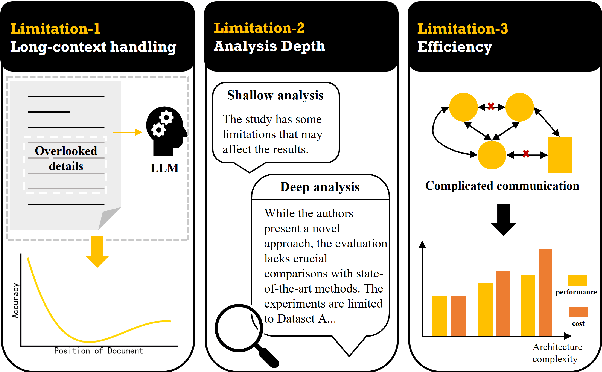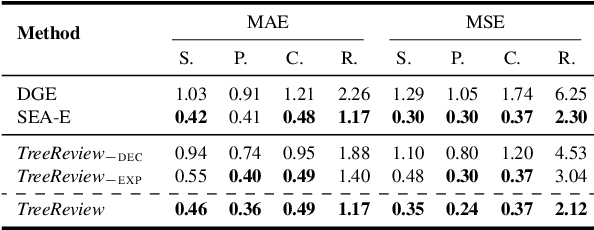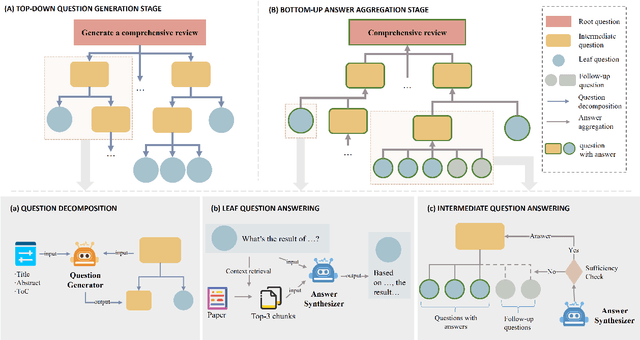Ngai Wong
A1: Asynchronous Test-Time Scaling via Conformal Prediction
Sep 18, 2025Abstract:Large language models (LLMs) benefit from test-time scaling, but existing methods face significant challenges, including severe synchronization overhead, memory bottlenecks, and latency, especially during speculative decoding with long reasoning chains. We introduce A1 (Asynchronous Test-Time Scaling), a statistically guaranteed adaptive inference framework that addresses these challenges. A1 refines arithmetic intensity to identify synchronization as the dominant bottleneck, proposes an online calibration strategy to enable asynchronous inference, and designs a three-stage rejection sampling pipeline that supports both sequential and parallel scaling. Through experiments on the MATH, AMC23, AIME24, and AIME25 datasets, across various draft-target model families, we demonstrate that A1 achieves a remarkable 56.7x speedup in test-time scaling and a 4.14x improvement in throughput, all while maintaining accurate rejection-rate control, reducing latency and memory overhead, and no accuracy loss compared to using target model scaling alone. These results position A1 as an efficient and principled solution for scalable LLM inference. We have released the code at https://github.com/menik1126/asynchronous-test-time-scaling.
LongEmotion: Measuring Emotional Intelligence of Large Language Models in Long-Context Interaction
Sep 09, 2025Abstract:Large language models (LLMs) make significant progress in Emotional Intelligence (EI) and long-context understanding. However, existing benchmarks tend to overlook certain aspects of EI in long-context scenarios, especially under realistic, practical settings where interactions are lengthy, diverse, and often noisy. To move towards such realistic settings, we present LongEmotion, a benchmark specifically designed for long-context EI tasks. It covers a diverse set of tasks, including Emotion Classification, Emotion Detection, Emotion QA, Emotion Conversation, Emotion Summary, and Emotion Expression. On average, the input length for these tasks reaches 8,777 tokens, with long-form generation required for Emotion Expression. To enhance performance under realistic constraints, we incorporate Retrieval-Augmented Generation (RAG) and Collaborative Emotional Modeling (CoEM), and compare them with standard prompt-based methods. Unlike conventional approaches, our RAG method leverages both the conversation context and the large language model itself as retrieval sources, avoiding reliance on external knowledge bases. The CoEM method further improves performance by decomposing the task into five stages, integrating both retrieval augmentation and limited knowledge injection. Experimental results show that both RAG and CoEM consistently enhance EI-related performance across most long-context tasks, advancing LLMs toward more practical and real-world EI applications. Furthermore, we conducted a comparative case study experiment on the GPT series to demonstrate the differences among various models in terms of EI. Code is available on GitHub at https://github.com/LongEmotion/LongEmotion, and the project page can be found at https://longemotion.github.io/.
Binary Weight Multi-Bit Activation Quantization for Compute-in-Memory CNN Accelerators
Aug 29, 2025Abstract:Compute-in-memory (CIM) accelerators have emerged as a promising way for enhancing the energy efficiency of convolutional neural networks (CNNs). Deploying CNNs on CIM platforms generally requires quantization of network weights and activations to meet hardware constraints. However, existing approaches either prioritize hardware efficiency with binary weight and activation quantization at the cost of accuracy, or utilize multi-bit weights and activations for greater accuracy but limited efficiency. In this paper, we introduce a novel binary weight multi-bit activation (BWMA) method for CNNs on CIM-based accelerators. Our contributions include: deriving closed-form solutions for weight quantization in each layer, significantly improving the representational capabilities of binarized weights; and developing a differentiable function for activation quantization, approximating the ideal multi-bit function while bypassing the extensive search for optimal settings. Through comprehensive experiments on CIFAR-10 and ImageNet datasets, we show that BWMA achieves notable accuracy improvements over existing methods, registering gains of 1.44\%-5.46\% and 0.35\%-5.37\% on respective datasets. Moreover, hardware simulation results indicate that 4-bit activation quantization strikes the optimal balance between hardware cost and model performance.
QuadINR: Hardware-Efficient Implicit Neural Representations Through Quadratic Activation
Aug 20, 2025Abstract:Implicit Neural Representations (INRs) encode discrete signals continuously while addressing spectral bias through activation functions (AFs). Previous approaches mitigate this bias by employing complex AFs, which often incur significant hardware overhead. To tackle this challenge, we introduce QuadINR, a hardware-efficient INR that utilizes piecewise quadratic AFs to achieve superior performance with dramatic reductions in hardware consumption. The quadratic functions encompass rich harmonic content in their Fourier series, delivering enhanced expressivity for high-frequency signals, as verified through Neural Tangent Kernel (NTK) analysis. We develop a unified $N$-stage pipeline framework that facilitates efficient hardware implementation of various AFs in INRs. We demonstrate FPGA implementations on the VCU128 platform and an ASIC implementation in a 28nm process. Experiments across images and videos show that QuadINR achieves up to 2.06dB PSNR improvement over prior work, with an area of only 1914$\mu$m$^2$ and a dynamic power of 6.14mW, reducing resource and power consumption by up to 97\% and improving latency by up to 93\% vs existing baselines.
Decomposing Densification in Gaussian Splatting for Faster 3D Scene Reconstruction
Jul 27, 2025Abstract:3D Gaussian Splatting (GS) has emerged as a powerful representation for high-quality scene reconstruction, offering compelling rendering quality. However, the training process of GS often suffers from slow convergence due to inefficient densification and suboptimal spatial distribution of Gaussian primitives. In this work, we present a comprehensive analysis of the split and clone operations during the densification phase, revealing their distinct roles in balancing detail preservation and computational efficiency. Building upon this analysis, we propose a global-to-local densification strategy, which facilitates more efficient growth of Gaussians across the scene space, promoting both global coverage and local refinement. To cooperate with the proposed densification strategy and promote sufficient diffusion of Gaussian primitives in space, we introduce an energy-guided coarse-to-fine multi-resolution training framework, which gradually increases resolution based on energy density in 2D images. Additionally, we dynamically prune unnecessary Gaussian primitives to speed up the training. Extensive experiments on MipNeRF-360, Deep Blending, and Tanks & Temples datasets demonstrate that our approach significantly accelerates training,achieving over 2x speedup with fewer Gaussian primitives and superior reconstruction performance.
GuiLoMo: Allocating Expert Number and Rank for LoRA-MoE via Bilevel Optimization with GuidedSelection Vectors
Jun 17, 2025Abstract:Parameter-efficient fine-tuning (PEFT) methods, particularly Low-Rank Adaptation (LoRA), offer an efficient way to adapt large language models with reduced computational costs. However, their performance is limited by the small number of trainable parameters. Recent work combines LoRA with the Mixture-of-Experts (MoE), i.e., LoRA-MoE, to enhance capacity, but two limitations remain in hindering the full exploitation of its potential: 1) the influence of downstream tasks when assigning expert numbers, and 2) the uniform rank assignment across all LoRA experts, which restricts representational diversity. To mitigate these gaps, we propose GuiLoMo, a fine-grained layer-wise expert numbers and ranks allocation strategy with GuidedSelection Vectors (GSVs). GSVs are learned via a prior bilevel optimization process to capture both model- and task-specific needs, and are then used to allocate optimal expert numbers and ranks. Experiments on three backbone models across diverse benchmarks show that GuiLoMo consistently achieves superior or comparable performance to all baselines. Further analysis offers key insights into how expert numbers and ranks vary across layers and tasks, highlighting the benefits of adaptive expert configuration. Our code is available at https://github.com/Liar406/Gui-LoMo.git.
TreeReview: A Dynamic Tree of Questions Framework for Deep and Efficient LLM-based Scientific Peer Review
Jun 09, 2025



Abstract:While Large Language Models (LLMs) have shown significant potential in assisting peer review, current methods often struggle to generate thorough and insightful reviews while maintaining efficiency. In this paper, we propose TreeReview, a novel framework that models paper review as a hierarchical and bidirectional question-answering process. TreeReview first constructs a tree of review questions by recursively decomposing high-level questions into fine-grained sub-questions and then resolves the question tree by iteratively aggregating answers from leaf to root to get the final review. Crucially, we incorporate a dynamic question expansion mechanism to enable deeper probing by generating follow-up questions when needed. We construct a benchmark derived from ICLR and NeurIPS venues to evaluate our method on full review generation and actionable feedback comments generation tasks. Experimental results of both LLM-based and human evaluation show that TreeReview outperforms strong baselines in providing comprehensive, in-depth, and expert-aligned review feedback, while reducing LLM token usage by up to 80% compared to computationally intensive approaches. Our code and benchmark dataset are available at https://github.com/YuanChang98/tree-review.
Hybrid Mesh-Gaussian Representation for Efficient Indoor Scene Reconstruction
Jun 08, 2025Abstract:3D Gaussian splatting (3DGS) has demonstrated exceptional performance in image-based 3D reconstruction and real-time rendering. However, regions with complex textures require numerous Gaussians to capture significant color variations accurately, leading to inefficiencies in rendering speed. To address this challenge, we introduce a hybrid representation for indoor scenes that combines 3DGS with textured meshes. Our approach uses textured meshes to handle texture-rich flat areas, while retaining Gaussians to model intricate geometries. The proposed method begins by pruning and refining the extracted mesh to eliminate geometrically complex regions. We then employ a joint optimization for 3DGS and mesh, incorporating a warm-up strategy and transmittance-aware supervision to balance their contributions seamlessly.Extensive experiments demonstrate that the hybrid representation maintains comparable rendering quality and achieves superior frames per second FPS with fewer Gaussian primitives.
SwingArena: Competitive Programming Arena for Long-context GitHub Issue Solving
May 29, 2025Abstract:We present SwingArena, a competitive evaluation framework for Large Language Models (LLMs) that closely mirrors real-world software development workflows. Unlike traditional static benchmarks, SwingArena models the collaborative process of software iteration by pairing LLMs as submitters, who generate patches, and reviewers, who create test cases and verify the patches through continuous integration (CI) pipelines. To support these interactive evaluations, we introduce a retrieval-augmented code generation (RACG) module that efficiently handles long-context challenges by providing syntactically and semantically relevant code snippets from large codebases, supporting multiple programming languages (C++, Python, Rust, and Go). This enables the framework to scale across diverse tasks and contexts while respecting token limitations. Our experiments, using over 400 high-quality real-world GitHub issues selected from a pool of 2,300 issues, show that models like GPT-4o excel at aggressive patch generation, whereas DeepSeek and Gemini prioritize correctness in CI validation. SwingArena presents a scalable and extensible methodology for evaluating LLMs in realistic, CI-driven software development settings. More details are available on our project page: swing-bench.github.io
PhyX: Does Your Model Have the "Wits" for Physical Reasoning?
May 21, 2025Abstract:Existing benchmarks fail to capture a crucial aspect of intelligence: physical reasoning, the integrated ability to combine domain knowledge, symbolic reasoning, and understanding of real-world constraints. To address this gap, we introduce PhyX: the first large-scale benchmark designed to assess models capacity for physics-grounded reasoning in visual scenarios. PhyX includes 3K meticulously curated multimodal questions spanning 6 reasoning types across 25 sub-domains and 6 core physics domains: thermodynamics, electromagnetism, mechanics, modern physics, optics, and wave\&acoustics. In our comprehensive evaluation, even state-of-the-art models struggle significantly with physical reasoning. GPT-4o, Claude3.7-Sonnet, and GPT-o4-mini achieve only 32.5\%, 42.2\%, and 45.8\% accuracy respectively-performance gaps exceeding 29\% compared to human experts. Our analysis exposes critical limitations in current models: over-reliance on memorized disciplinary knowledge, excessive dependence on mathematical formulations, and surface-level visual pattern matching rather than genuine physical understanding. We provide in-depth analysis through fine-grained statistics, detailed case studies, and multiple evaluation paradigms to thoroughly examine physical reasoning capabilities. To ensure reproducibility, we implement a compatible evaluation protocol based on widely-used toolkits such as VLMEvalKit, enabling one-click evaluation.
 Add to Chrome
Add to Chrome Add to Firefox
Add to Firefox Add to Edge
Add to Edge